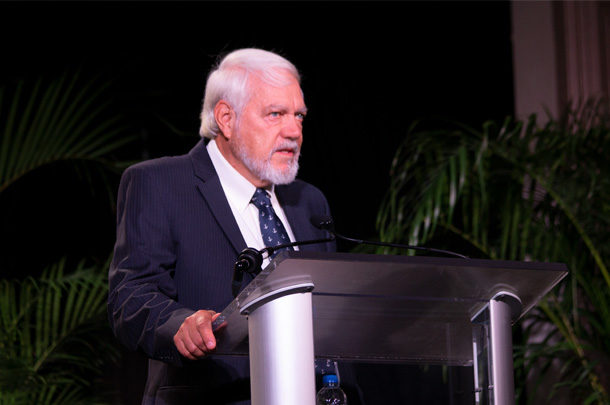“[We have] severe drought, exceptional drought occurring all through the western U.S. and into the Plains,” Douglas said. “Continental droughts are widespread around the world as La Nina focuses moistures from South America to Australia.”
According to NOAA and European climate models, a return of La Nina is expected this fall, which would lead to intensifying drought conditions for the West and Plains regions into early 2022. These areas currently show between 55% to 75% below normal in precipitation and in the bottom 12% of years in terms of vegetative greenness since 1982.
Douglas expects the La Nina event to peak come October and November and have a significant impact on this region. What is encouraging, however, is the uptick in sea surface temperatures, which he said, is the first hint of a possible El Nino later next year. “That could really help break the drought in the western United States,” Douglas noted.
La Nina hasn’t been all bad for the U.S. Douglas pointed out that a summer monsoon moving out of Mexico into New Mexico, Arizona and Texas, as well as tropical storm activity in the Gulf Coast, has brought a good amount of moisture from the Gulf Coast all the way to the Carolinas. This has led to improvements in Texas and New Mexico when compared to last year, Douglas said.
Looking at the fall forecast, temperatures are expected to be above normal through the midsection of the country into the Corn Belt. Models indicate the Pacific storm track will be forced far north of normal, resulting in a delayed fall rainy season in coastal areas. The Corn Belt will be drier in September as the drought high hangs on.
“We are not going to have the crop that we did last year,” Douglas said. “There is virtually no state in the Corn Belt that is not brown. The only exception is Ohio. So, it’s going to be good for harvest. We’re not going to have delays due to moisture, but for crops in the month of September, it’s going to be a bit of a problem for corn and beans,” he said.
As for the winter, Douglas forecasts a deep Canadian trough leading to a cold winter across the northcentral states with cold outbreaks extending to the Gulf Coast. The ridge off the West Coast will force the jet north into western Canada, resulting in a reduction in winter storms across the West and Plains. “The only moisture is really only going to be in the northern Rockies and the Ohio Valley. The whole western United states, including the Plains, will really not have good Pacific moisture coming in,” he said.
With that said, all eyes will be on the return of El Nino. Douglas explained that based on 12 years of analog forecast data, there is a one-third possibility that La Nina could continue for another year, while the remaining years predict El Nino to return within one year. Douglas concluded: “2023 could be a wet year throughout the western United States.” ![]()
PHOTO: Art Douglas in his final weather outlook session at the NCBA Cattle Industry Convention and Tradeshow in Nashville, Tennessee. Photo by Carrie Veselka.
-
Cassidy Woolsey
- Editor
- Progressive Cattle
- Email Cassidy Woolsey








